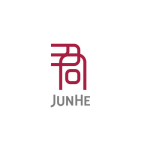On September 25 2020, the China Securities Regulatory Commission (CSRC), the People's Bank of China (PBOC), and the State Administration of Foreign Exchange (SAFE) jointly released the Measures for Administration of Domestic Securities and Futures Investment by Qualified Foreign Institutional Investors and RMB Qualified Foreign Institutional Investors (《合格境外机构投资者和人民币合格境外机构投资者境内证券期货投资管理办法》) which will take effect on November 1 2020 (R/QFII measures). Along with the R/QFII measures, CSRC also published corresponding implementing provisions (together with the R/QFII measures and the R/QFII regulations). Such R/QFII regulations have unified the originally separated regulations on the QFII and RQFII for the first time.
There are multiple changes in the R/QFII regulations. These are substantial and show the further opening up of China's capital markets. The biggest spotlight is on the extension of investment scope. Compared to the investment currently allowed by the QFII and RQFII which generally includes shares, bonds, fixed income products traded in the inter-bank bond market, public securities investment funds and stock index futures, investment scope is further opened up to the QFII and RQFII mainly in the following aspects including but not limited to (i) shares traded on the National Equities Exchange and Quotations; (ii) financial futures; (iii) commodity futures; (iv) options; (v) private investment funds; and (vi) margin trading and securities lending on the exchanges, and securities lending to the securities finance company. The types and trading methods of financial futures, commodity futures and options that QFII and RQFII can participate in shall be separately approved by the CSRC.
In addition to the investment scope, other provisions in the R/QFII regulations will also make it more convenient for the QFII and RQFII to invest in China's capital markets, i.e. lowering the entry threshold by cancelling the requirements on operation years and asset size of the QFII and RQFII, simplifying application procedures by reducing application documents and shortening the approval time of the authority, and removing limits on the number of onshore service providers of the QFII and RQFII.
Apart from the recently promulgated R/QFII regulations, authorities have also removed restrictions on the quotas of the QFII and RQII this May. These are optimistic signals that China's capital markets will become further opened up to the world. Considering its great potential, we anticipate more incentives in China to stimulate the liquidity and vitality of the markets and attract more participation from foreign investors.


